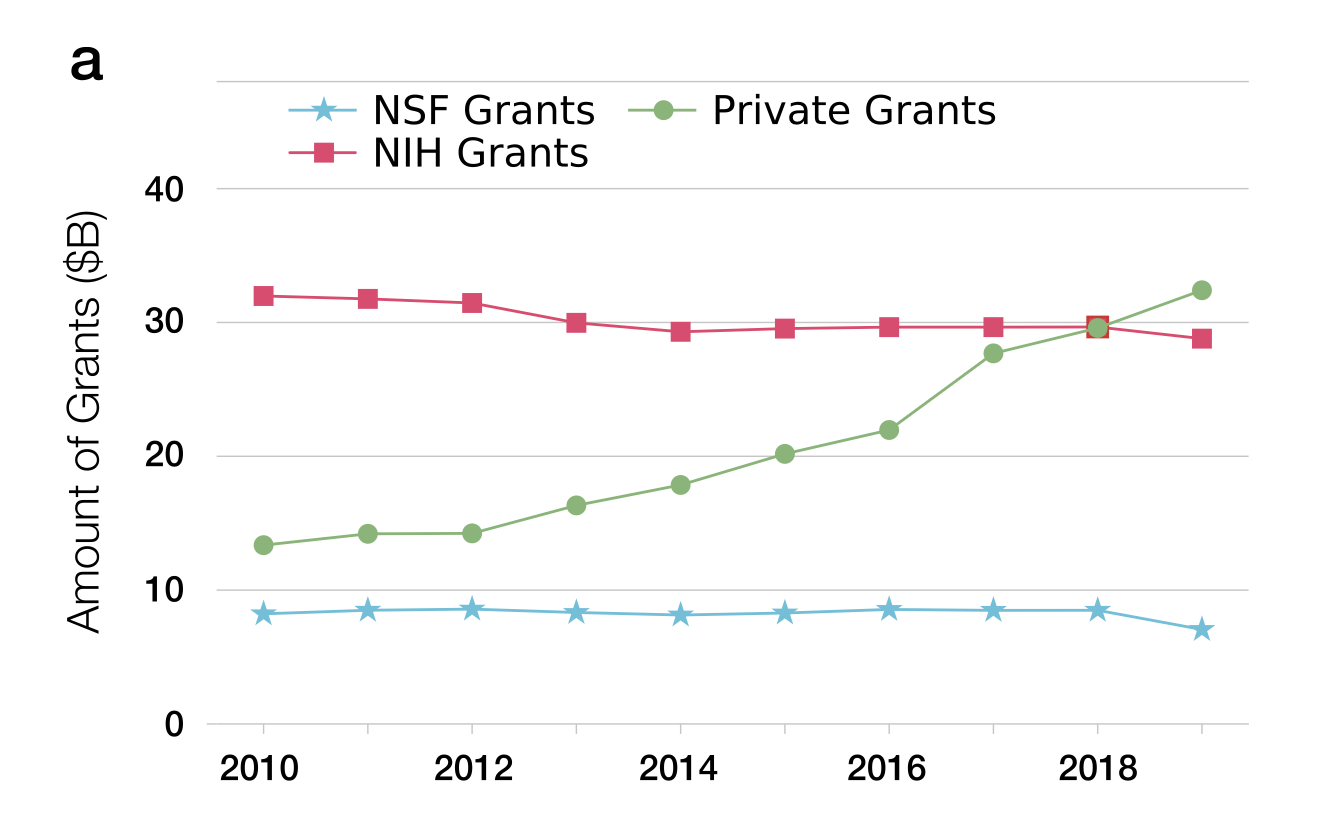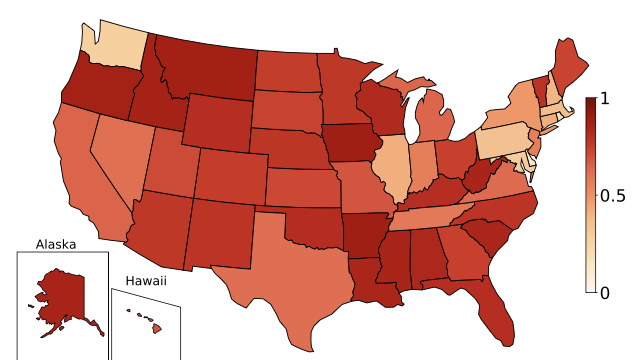July 23, 2025
Unlocking Philanthropic Grants
What Research Administrators Need to Know

For research administrators, securing funding is a perpetual quest. While federal agencies like the NSF and NIH remain cornerstones of scientific support, a significant and growing force is reshaping the funding landscape: philanthropy. A recent paper, "Mapping philanthropic support of science", published in Scientific Reports, sheds light on the often-opaque world of philanthropic giving, offering crucial insights for those navigating the grant ecosystem.
Philanthropy: A Funding Powerhouse Rivaling Federal Support
The study, based on an analysis of nearly one million grants from 685,397 non-profit organizations, reveals that philanthropic funding to universities and research institutions now rivals the annual amounts distributed by major federal agencies. This highlights philanthropy as a substantial and increasingly critical source of funds for scientific endeavors.
 "The amount of grants provided to institutions performing research by private nonprofit organizations has grown considerably over the past decade, surpassing the amount of grants given by the NSF and NIH."
"The amount of grants provided to institutions performing research by private nonprofit organizations has grown considerably over the past decade, surpassing the amount of grants given by the NSF and NIH."
Key Characteristics of the Philanthropic Funding Landscape
The paper uncovers several key patterns in philanthropic giving that research administrators should be aware of:
-
A Diverse Ecosystem: Unlike the more centralized federal funding model, the philanthropic landscape is highly diverse, comprising a few very large foundations alongside a multitude of smaller funders. This means opportunities can come from various sources, not just the biggest names.
-
The Power of Proximity - Philanthropy's Local Focus: A significant finding is the strong preference philanthropic funders have for local organizations. Approximately 35% of philanthropic grants go to the donor's state, a rate seven times higher than what would be expected if geography played no role. This local focus persists even among large foundations with national or international missions. This suggests that establishing and nurturing local connections can be a powerful strategy for securing grants.
 "The fraction of dollars given within the state for donors in each state."
"The fraction of dollars given within the state for donors in each state."
-
Stability in Relationships: Philanthropic funding relationships tend to be remarkably stable over time. The study found that 69% of grant relationships repeat one year later, and this likelihood increases to nearly 90% for relationships that have been ongoing for seven years. This "lock-in" effect means that once a funding relationship is established, it is likely to continue.
-
Shared Interests and Networks: Funders often share multiple recipients with one another suggesting that funders with similar aims tend to identify the same groups of recipients and that this network pattern contains predictive power for future grants.
Navigating the Philanthropic Landscape with Your Grant Search Engine
These insights underscore the importance of a strategic approach to grant seeking. For research administrators, understanding these dynamics can significantly enhance success rates.
Your grant search engine can be an invaluable tool by allowing research administrators to:
- Target Locally: Focus searches on funders with a demonstrated history of supporting institutions within your geographic region.
- Identify Stable Relationships: Look for funders known for long-term commitments, indicating a higher likelihood of sustained support.
- Leverage Network Insights: Explore connections between your current funders and other potential donors, identifying those who share similar recipient portfolios.
By utilizing the nuanced understanding of philanthropic funding patterns, research administrators can move beyond traditional search methods and adopt a more informed, targeted approach to securing vital support for scientific advancement.
Ready to improve your grant search strategy? Book a demo today to learn how our grant search engine can help you uncover new philanthropic opportunities and streamline your funding efforts!